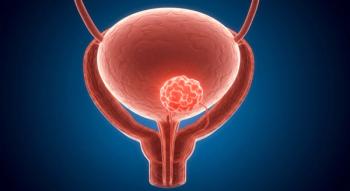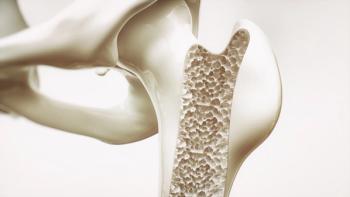
Monoclonal antibody demonstrates efficacy in postmenopausal osteoporosis
A pivotal phase 3 trial of a fully human monoclonal antibody, denosumab, that prevents bone destruction is under way and includes 7,800 postmenopausal, osteoporotic women aged 60 to 90 years. The primary endpoint is new vertebral fractures versus placebo and secondary end points are safety and tolerability of the new agent. Phase 2 clinical trials have demonstrated that denosumab is superior to aldendronate in preserving bone mineral density (BMD), reported researchers during the American College of Rheumatology Annual Scientific Meeting in San Diego, Calif.
A pivotal phase 3 trial of a fully human monoclonal antibody, denosumab, that prevents bone destruction is under way and includes 7,800 postmenopausal, osteoporotic women aged 60 to 90 years. The primary endpoint is new vertebral fractures versus placebo and secondary end points are safety and tolerability of the new agent. Phase 2 clinical trials have demonstrated that denosumab is superior to aldendronate in preserving bone mineral density (BMD), reported researchers during the American College of Rheumatology Annual Scientific Meeting in San Diego, Calif.
Denosumab targets RANK Ligand (RANKL), a protein that signals bone removal, preserves the body's natural defense against bone destruction, and promotes bone turnover. It significantly increases BMD compared with aldendronate in postmenopausal women with osteopenia and osteoporosis, said Michael Lewiecki, MD, assistant clinical professor of medicine, University of New Mexico School of Medicine, Albuquerque.
Preclinical studies demonstrated that inhibiting RANKL significantly improves cortical and trabecular bone density, volume, and strength. "Denosumab binds to the RANK ligand receptor and prevents osteoclast formation, function, and survival," he said. "Denosumab does not bind to TNF-alpha, TRAIL, or CD40L and is rapidly absorbed with a long half-life averaging 34 days."
After 2 years, women receiving the 60 mg dose of denosumab twice annually had a 7.37% increase in lumbar spine BMD compared with 6.22% for aldendronate, a 5.11% increase in hip BMD compared with 3.4%, and a 1.77% increase in distal radius BMD versus a 0.81 loss of BMD for aldendronate patients. Mean total body BMD increase was 2.63% for those taking denosumab and 1.51% for those in the aldendronate group. These results significantly favored denosumab compared with aldendronate (P<.05) and BMD continued to increase throughout the study period, Dr Lewiecki said.
When compared with placebo, increases in BMD at all sites measured were statistically significant for denosumab (P<.001). Placebo patients experienced continued BMD decreases at all sites during the 2-year treatment period. Dr Lewiecki also reported that there was continued and significant suppression of the bone resorption markers CTX and urine NTX/creatinine throughout the study period with denosumab compared with placebo (P<.001).
The researchers determined that 60 mg of denosumab injected twice annually was most efficacious with few adverse events. Overall, denosumab was well tolerated, with 82% of patients completing the study. There were no significant differences in adverse events between treatment groups except for dyspepsia, which was reported by 26% of aldendronate patients versus 10% of denosumab patients.
Infections occurred in 54.3% of placebo patients, 64.3% of denosumab patients, and 65.2% of aldendronate patients. Serious infections occurred in none of the placebo or aldendronate patients and in 1.9% of denosumab patients. The incidence of serious neoplasms or malignancies was greater among placebo patients (4.3%) than among denosumab-treated (3.2%) or aldendronate-treated (2.2%) patients.
"No neutralizing antibodies to denosumab were detected," Dr Lewiecki said. "These data suggest that denosumab may offer a promising alternative for prevention and treatment of osteoporosis."
The manufacturer reported that denosumab has also shown positive phase 2 results in breast cancer patients with bone metastases and a trial in treatment-induced bone loss in breast and prostate cancer patients undergoing hormone ablation therapy is ongoing. The agent is also being investigated for rheumatoid arthritis and multiple myeloma treatment.
Newsletter
Get the latest industry news, event updates, and more from Managed healthcare Executive.






















































